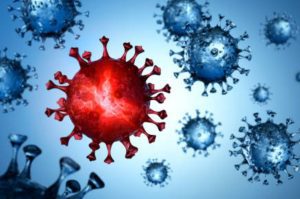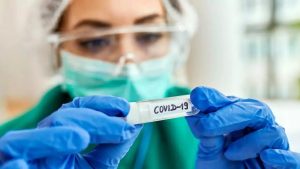West Bengal COVID-19 Cases Rise Again: The state of West Bengal, much like several other parts of India and the world, is witnessing a fresh surge in COVID-19 cases. As of late May 2025, health authorities have reported 11 active cases, with four new infections detected recently. The sudden rise in infections has drawn attention to a new sub-variant of the Omicron strain, known as JN.1, along with its offshoots NB.1.8.1 and LF.7. While the overall severity of the illness caused by these sub-variants remains mild, the increasing number of cases has triggered concern among health officials, epidemiologists, and the public alike.
This article aims to provide a comprehensive understanding of the current COVID-19 scenario in West Bengal. It will cover the epidemiological details, symptoms, transmission dynamics, the significance of the JN.1 variant, and the necessary preventive measures. Additionally, it will discuss the preparedness of the healthcare infrastructure, vaccination status, and lessons learned from previous waves.

West Bengal COVID-19 Cases: Current Situation
As per the official data released on May 26, 2025, West Bengal has recorded 11 active COVID-19 cases, marking an increase from previous weeks when cases had dwindled significantly. The new cases primarily emerged from Kolkata and surrounding areas such as Mograhat in South 24 Parganas, a region that experienced high infection rates during earlier waves.
A particularly notable case includes a 15-year-old boy from Rishra who was admitted to Peerless Hospital with symptoms including high fever, persistent cough, vomiting, and severe dehydration. This case is significant because it represents the first detection of SARS-CoV-2 in Peerless Hospital since September 2024, indicating that the virus is resurfacing even in regions and hospitals that had previously seen a lull.
Health officials emphasize that these new infections are being closely monitored. Most patients are exhibiting mild to moderate symptoms and are undergoing treatment in both state-run and private healthcare facilities. None of the recent patients, as per reports, have required intensive care or ventilatory support, reflecting the less severe nature of the current strains.

Understanding the JN.1 Variant and Its Sub-Lineages
The JN.1 variant is a sub-lineage of the Omicron variant, which dominated globally in earlier years due to its high transmissibility and comparatively lower severity. The emergence of JN.1 and its subvariants such as NB.1.8.1 and LF.7 has sparked interest and caution in the scientific community.
Characteristics of the JN.1 Variant
-
High Transmissibility: Similar to previous Omicron variants, JN.1 spreads rapidly through respiratory droplets, contact with contaminated surfaces, and close personal contact.
-
Mild to Moderate Symptoms: Clinical presentations predominantly resemble those of the common flu, with symptoms like fever, sore throat, dry cough, nasal congestion, and gastrointestinal issues such as diarrhea.
-
Potential for Underreporting: Due to mild symptoms that overlap with seasonal flu and other common illnesses, many individuals may self-medicate or neglect to get tested, which could lead to underreporting and silent spread.
-
Immune Escape: Early studies suggest JN.1 has some mutations that may reduce the effectiveness of neutralizing antibodies, leading to breakthrough infections in vaccinated individuals, though vaccines still provide significant protection against severe illness and hospitalization.
Comparison with Earlier Variants
While JN.1 shares several characteristics with the original Omicron variant, it differs in its genetic makeup, which might influence transmissibility and immune escape capabilities. Fortunately, there is currently no evidence suggesting increased severity or higher fatality rates compared to earlier variants.
Symptoms and Clinical Presentation
The symptoms associated with the JN.1 variant are similar to those experienced in previous Omicron waves but are generally milder than those from the Delta variant or the original strain. The most common symptoms include:
-
Fever (often low-grade)
-
Sore throat
-
Dry cough
-
Nasal congestion or runny nose
-
Fatigue and body aches
-
Gastrointestinal symptoms such as nausea, vomiting, or diarrhea in some cases
Because these symptoms closely resemble those of seasonal flu or common cold, healthcare professionals urge caution and recommend testing for anyone exhibiting these symptoms, especially if they have had recent exposure to confirmed cases or travel history to affected areas.
Public Health Response in West Bengal
In response to the resurgence, the West Bengal health authorities have ramped up surveillance and testing activities. Contact tracing efforts have been intensified in affected districts to identify and isolate positive cases quickly. Public health messages emphasizing the importance of mask-wearing, hand hygiene, and social distancing have been reinforced through various media platforms.
Testing and Contact Tracing
-
The state government has increased the number of COVID-19 testing centers, including rapid antigen tests and RT-PCR facilities.
-
Mobile testing units have been deployed to hotspots to ensure accessibility.
-
Contact tracing teams are actively working to identify and monitor close contacts of confirmed cases.
Healthcare Infrastructure Preparedness
-
Hospitals across the state, both government and private, have been alerted to expect a possible rise in cases.
-
Isolation wards have been prepared and are being kept ready for admission if the case numbers increase.
-
Medical oxygen supply and essential drugs are being stockpiled as a precaution.
Vaccination Drives
Vaccination remains a critical tool in combating COVID-19. West Bengal continues to promote vaccination campaigns targeting booster doses for eligible populations, especially vulnerable groups like the elderly and immunocompromised.
-
The state has achieved substantial vaccination coverage, with over 80% of the eligible population receiving at least two doses.
-
Booster dose drives are ongoing, with efforts to reach remote areas.
-
Awareness campaigns address vaccine hesitancy and misinformation.
Global Context and Comparisons
The rise of sub-variants such as JN.1 is not unique to West Bengal or India; many countries globally have reported similar strains causing localized spikes in infections. Studies from Europe and parts of North America indicate that while these variants spread quickly, the rates of hospitalization and death have not increased significantly.
-
Countries are adopting strategies focusing on vaccination, targeted restrictions, and protecting vulnerable populations.
-
Researchers worldwide continue to monitor genetic changes in the virus to predict future trends and update vaccines accordingly.
Implications for Public and Economic Life
The resurgence of COVID-19 cases, even at relatively low levels, impacts public behavior and economic activities. Schools, workplaces, and public transport services have revisited safety protocols. Some sectors are reconsidering hybrid work models to reduce crowding.
-
Education: Schools are encouraging parents to keep children home if symptomatic and are reinforcing mask mandates.
-
Workplaces: Companies are promoting remote work where feasible and emphasizing workplace hygiene.
-
Public Transport: Increased cleaning protocols and mask mandates are in place.
-
Events and Gatherings: Authorities advise caution for large public events and gatherings.
Preventive Measures and Recommendations
Health experts continue to stress the importance of following basic preventive measures:
-
Mask Wearing: Especially in crowded or enclosed spaces.
-
Hand Hygiene: Frequent handwashing or using hand sanitizers.
-
Physical Distancing: Maintaining distance where possible.
-
Testing and Isolation: Getting tested promptly if symptomatic and isolating to prevent spread.
-
Vaccination: Completing the full vaccination schedule including boosters.
-
Monitoring Symptoms: Early detection through self-monitoring and timely medical consultation.
Challenges and the Road Ahead
Challenges
-
Misinformation and Complacency: As the pandemic progresses, misinformation about the virus and vaccines persists, leading to complacency among some segments of the population.
-
Healthcare Fatigue: The prolonged pandemic has strained healthcare workers and resources, which may affect response capacity.
-
Virus Evolution: The virus continues to mutate, requiring constant vigilance and adaptability in public health strategies.
Opportunities
-
Scientific Advancements: Rapid development of vaccines and therapeutics.
-
Improved Surveillance: Genomic sequencing capabilities have enhanced tracking of variants.
-
Public Awareness: Increased knowledge about infectious disease prevention.
The recent increase in COVID-19 cases in West Bengal serves as a reminder that the pandemic is not over, and vigilance remains essential. The JN.1 variant, while highly transmissible, appears to cause mild illness for most, thanks in large part to vaccination and prior infections. Public health authorities urge citizens to remain cautious, adhere to recommended guidelines, and participate in vaccination drives to protect themselves and their communities.
Maintaining a balance between normalcy and caution will be key to managing this new wave. With collective efforts from government, healthcare workers, scientists, and the public, West Bengal can navigate this resurgence effectively and minimize the impact on health and society.
Do Follow:
-
Ministry of Health and Family Welfare (MoHFW) – COVID-19 Dashboard
This dashboard offers real-time data on COVID-19 cases across India, including state-wise statistics for West Bengal.
🔗 https://covid19dashboard.mohfw.gov.in/ -
Press Information Bureau (PIB) – COVID-19 Press Releases
The PIB provides official press releases and updates from the Government of India regarding COVID-19, including information on new variants like JN.1.
🔗 https://www.pib.gov.in/PressReleseDetail.aspx?PRID=1987840 -
Integrated Disease Surveillance Programme (IDSP) – Ministry of Health and Family Welfare
IDSP monitors disease outbreaks and provides alerts and updates, including those related to COVID-19.
🔗 https://idsp.mohfw.gov.in/ -
Indian Council of Medical Research (ICMR)
ICMR conducts and disseminates research on various health issues, including COVID-19 variants and their impact.
🔗 https://www.icmr.gov.in/ -
INSACOG (Indian SARS-CoV-2 Genomics Consortium)
INSACOG monitors the genomic variations in SARS-CoV-2, including tracking new variants like JN.1.
🔗 https://insacog.gov.in/ -
Government of West Bengal – Department of Health & Family Welfare
The official portal provides state-specific health advisories, updates, and resources related to COVID-19.
🔗 https://www.wbhealth.gov.in/ -
Press Information Bureau (PIB) – COVID-19 Updates
Regular bulletins and updates on the COVID-19 situation in India, including variant tracking and health advisories.
🔗 https://pib.gov.in/PressReleasePage.aspx?PRID=1778959
Also read: Home | Channel 6 Network – Latest News, Breaking Updates: Politics, Business, Tech & More

